Voronoi Diagrams and Perpendicular Bisectors 3.6
In this fascinating topic, we will delve into the wonderful world of Voronoi diagrams. This includes creating Voronoi diagrams with perpendicular bisectors, adding a new site, nearest neighbour interpolation and the toxic waste dump problem. I hope you enjoy applying mathematics to the real world in this rich and interesting area of the course
In this unit you should learn to…
-
Be able to find perpendicular gradients and hence a perpendicular bisector between two points.
-
Be able to create a Voronoi diagram with two or three sites.
-
Be able to add a new site to a Voronoi diagram.
-
Be able use nearest neighbour interpolation.
-
Be able to find the largest empty circle in a Voronoi diagram.
Quiz
Practice your understanding on these quiz questions. Check your answers when you are done and read the hints where you got stuck. If you find there are still some gaps in your understanding then go back to the videos and slides above.
How much of 3.5 & 3.6 Perpendicular Bisectors & Voronoi Diagrams have you understood?



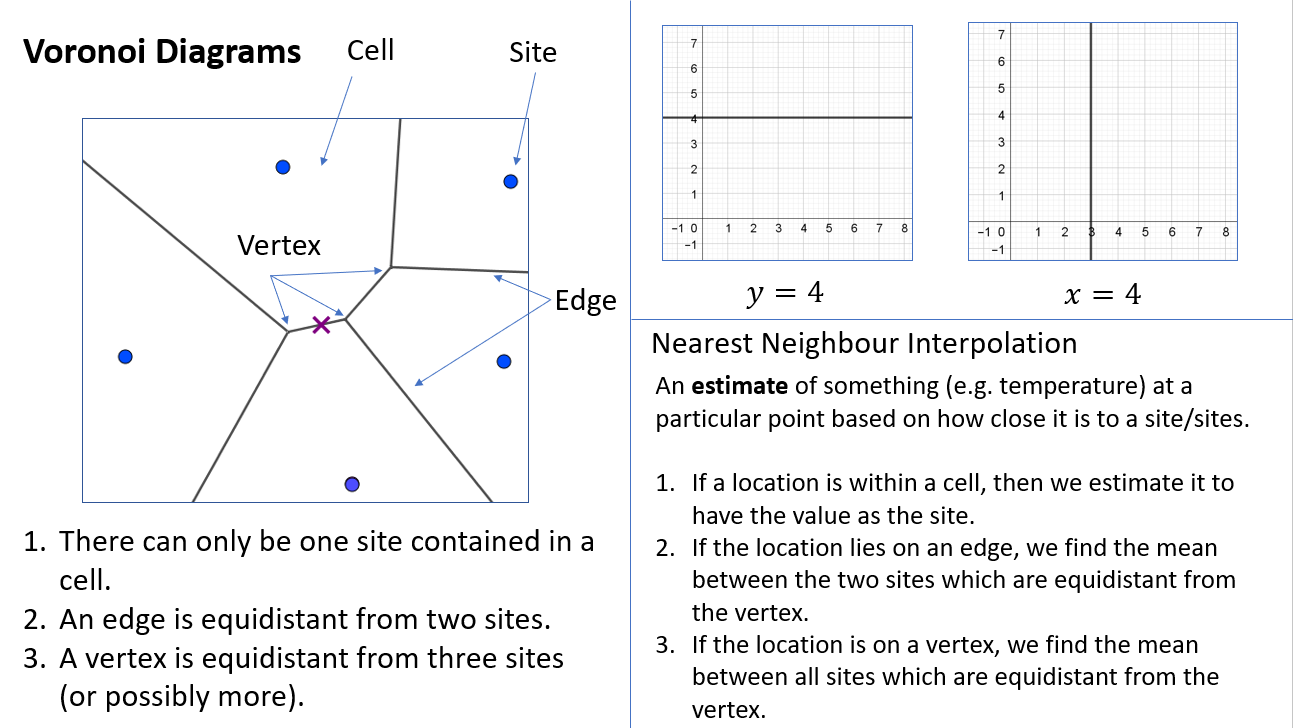
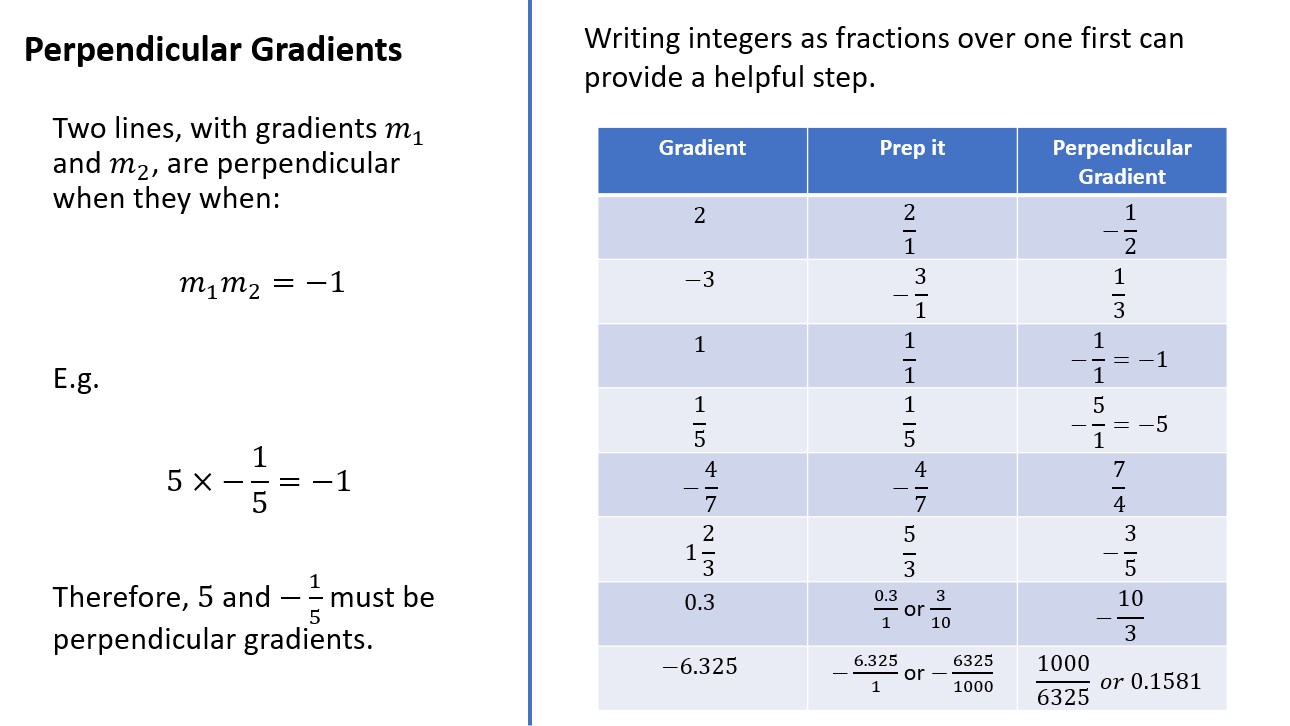
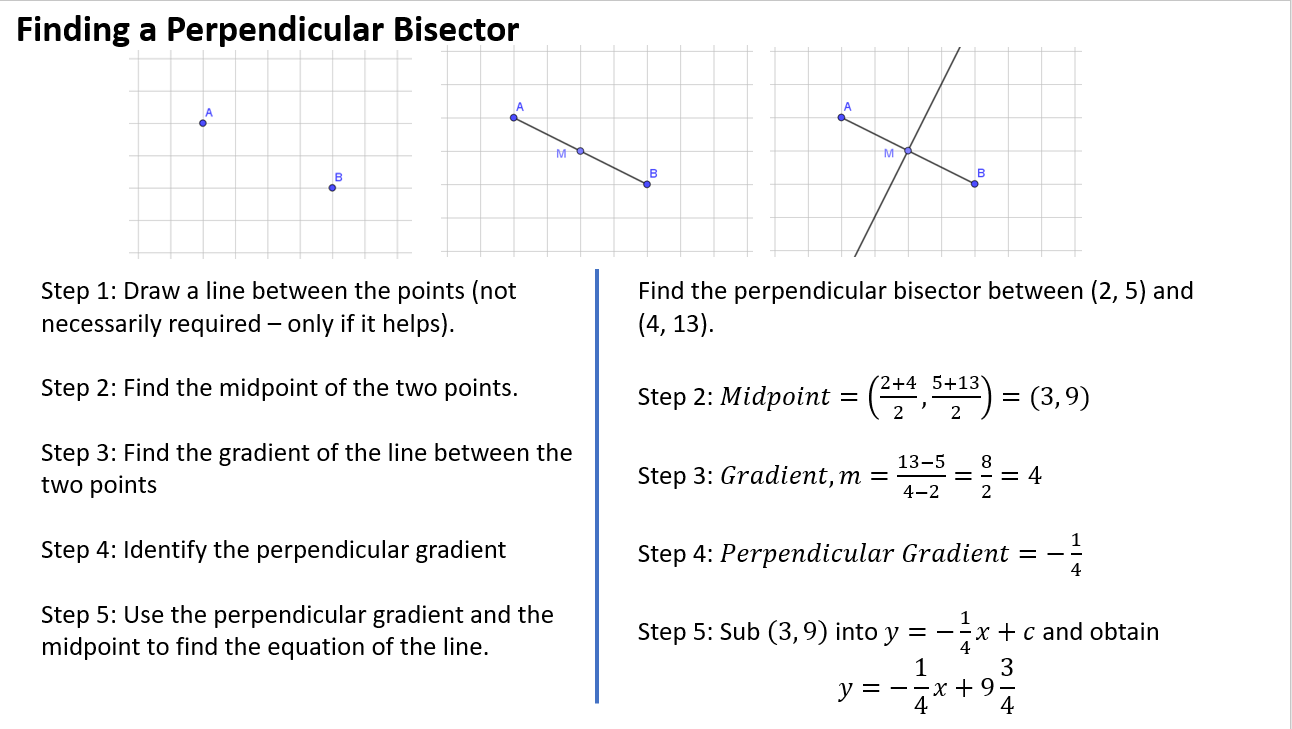

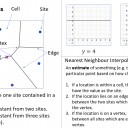

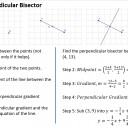

.png)
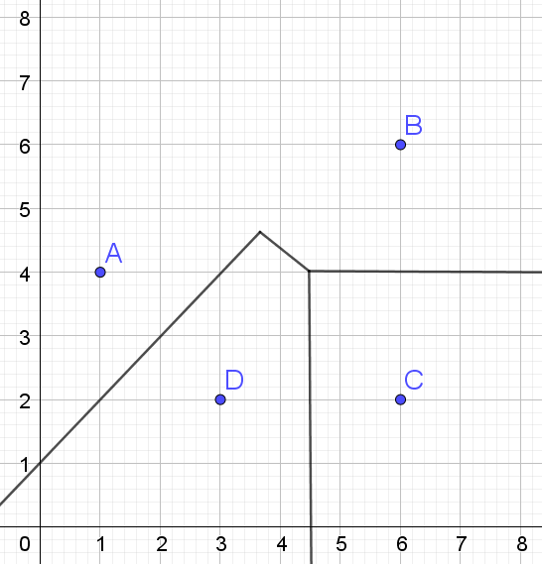
.png)
.png)

.png)
.png)
.png)
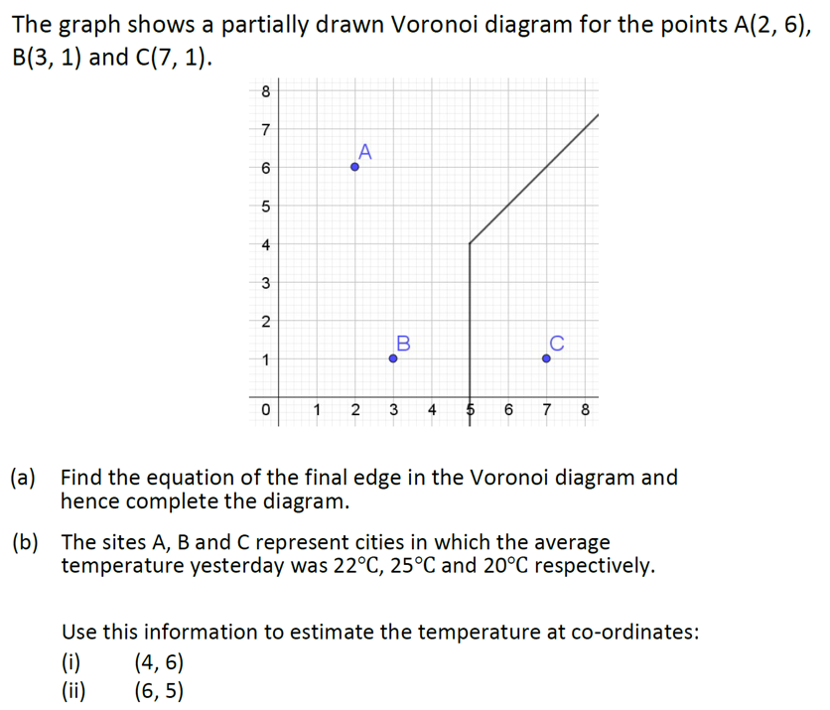
.png)

.png)

 Twitter
Twitter  Facebook
Facebook  LinkedIn
LinkedIn